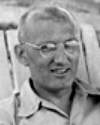
Born 22 Oct 1905; died 14 Feb 1950 at age 44.
Karl Guthe Jansky was an American electrical engineer and radio engineer who discovered cosmic radio emissions. In 1932, Jansky was at Bell Laboratories in New Jersey, investigating the crackling static noises that plagued short wave overseas telephone reception. He found certain radio waves coming from the sky—every 23 hr 56 min—from the direction of Sagittarius toward the center of the Milky Way. When he published his results, he suggested that the radio emission was somehow connected to the Milky Way. Jansky thought that the radio signals originated not from stars, but from ionized interstellar gas. At the age of 26, Jansky had made a historic discovery—that celestial bodies could emit radio waves as well as light waves.«
Karl Guthe Jansky was an American electrical engineer and radio engineer who discovered cosmic radio emissions. In 1932, Jansky was at Bell Laboratories in New Jersey, investigating the crackling static noises that plagued short wave overseas telephone reception. He found certain radio waves coming from the sky—every 23 hr 56 min—from the direction of Sagittarius toward the center of the Milky Way. When he published his results, he suggested that the radio emission was somehow connected to the Milky Way. Jansky thought that the radio signals originated not from stars, but from ionized interstellar gas. At the age of 26, Jansky had made a historic discovery—that celestial bodies could emit radio waves as well as light waves.«
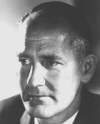
Born 22 Oct 1903; died 9 Jun 1989 at age 85. quotes
George Wells Beadle was an American geneticist who helped found biochemical genetics when he showed that genes affect heredity genes act by regulating definite chemical events. He shared the 1958 Nobel Prize for Physiology or Medicine with Edward Tatum and Joshua Lederberg. Beadle and Tatum succeeded in demonstrating that the body substances are synthesized in the individual cell step by step in long chains of chemical reactions, and that genes control these processes by individually regulating definite steps in the synthesis chain. This regulation takes place through formation by the gene of special enzymes.
George Wells Beadle was an American geneticist who helped found biochemical genetics when he showed that genes affect heredity genes act by regulating definite chemical events. He shared the 1958 Nobel Prize for Physiology or Medicine with Edward Tatum and Joshua Lederberg. Beadle and Tatum succeeded in demonstrating that the body substances are synthesized in the individual cell step by step in long chains of chemical reactions, and that genes control these processes by individually regulating definite steps in the synthesis chain. This regulation takes place through formation by the gene of special enzymes.
George Beadle... The Emergence of Genetics in the 20th Century, by Paul Berg, Maxine Singer. - book suggestion.
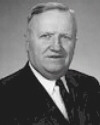
Born 22 Oct 1902; died 15 Dec 1984 at age 82. quotes
American chemist who, during the 1940s and '50s, developed processes for reducing individual rare-earth elements to the metallic state at low cost, thereby making these substances available to industry at reasonable prices. Earlier, upon the discovery of nuclear fission in 1939, the U.S. government asked leading scientists to join in the development of nuclear energy. In 1942, Iowa State College's Frank H. Spedding, an expert in the chemistry of rare earths, agreed to set up the Ames portion of the Manhattan Project, resulting in an easy and inexpensive procedure to produce high quality uranium. Between 1942 and 1945, almost two million pounds of uranium was processed on campus, in the old Popcorn Laboratory.
American chemist who, during the 1940s and '50s, developed processes for reducing individual rare-earth elements to the metallic state at low cost, thereby making these substances available to industry at reasonable prices. Earlier, upon the discovery of nuclear fission in 1939, the U.S. government asked leading scientists to join in the development of nuclear energy. In 1942, Iowa State College's Frank H. Spedding, an expert in the chemistry of rare earths, agreed to set up the Ames portion of the Manhattan Project, resulting in an easy and inexpensive procedure to produce high quality uranium. Between 1942 and 1945, almost two million pounds of uranium was processed on campus, in the old Popcorn Laboratory.

vitamin C
Born 22 Oct 1896; died 24 Jan 1988 at age 91.
American biochemist who discovered vitamin C, an aid in the prevention of scurvy and malnutrition. After five years of painstaking research extracting components from lemon juice, in 1932, King isolated vitamin C. Its structure was quickly determined and it was synthesized by scientists such as Haworth and Reichstein in 1933. Also known as ascorbic acid, (a- = not, without; scorbus = scurvy), vitamin C is a colourless crystalline water-soluble vitamin found especially in citrus fruits and green vegetables. Most organisms synthesize it from glucose but man and other primates and various other species must obtain it from their diet. It is required for the maintenance of healthy connective tissue; deficiency leads to scurvy. Vitamin C is readily destroyed by heat and light.
American biochemist who discovered vitamin C, an aid in the prevention of scurvy and malnutrition. After five years of painstaking research extracting components from lemon juice, in 1932, King isolated vitamin C. Its structure was quickly determined and it was synthesized by scientists such as Haworth and Reichstein in 1933. Also known as ascorbic acid, (a- = not, without; scorbus = scurvy), vitamin C is a colourless crystalline water-soluble vitamin found especially in citrus fruits and green vegetables. Most organisms synthesize it from glucose but man and other primates and various other species must obtain it from their diet. It is required for the maintenance of healthy connective tissue; deficiency leads to scurvy. Vitamin C is readily destroyed by heat and light.
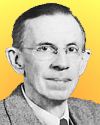
1946 (EB)
Born 22 Oct 1881; died 1 Feb 1958 at age 76. quotes
American physicist who shared the Nobel Prize for Physics in 1937 (with Englishman George P. Thomson) for discovering that electrons can be diffracted like light waves, thus verifying the thesis of Louis de Broglie that electrons behave both as waves and as particles. Davisson studied the effect of electron bombardment on surfaces, and observed (1925) the angle of reflection could depend on crystal orientation. Following Louis de Broglie's theory of the wave nature of particles, he realized that his results could be due to diffraction of electrons by the pattern of atoms on the crystal surface. Davisson worked with Lester Germer in an experiment in which electrons bouncing off a nickel surface produced wave patterns similar to those formed by light reflected from a diffraction grating, and supporting de Broglie's electron wavelength = (h/p). This discovery has been applied to the study of nuclear, atomic, and molecular structure. Davisson helped develop the electron microscope which uses the wave nature of electrons to view details smaller than the wavelength of visible light.
American physicist who shared the Nobel Prize for Physics in 1937 (with Englishman George P. Thomson) for discovering that electrons can be diffracted like light waves, thus verifying the thesis of Louis de Broglie that electrons behave both as waves and as particles. Davisson studied the effect of electron bombardment on surfaces, and observed (1925) the angle of reflection could depend on crystal orientation. Following Louis de Broglie's theory of the wave nature of particles, he realized that his results could be due to diffraction of electrons by the pattern of atoms on the crystal surface. Davisson worked with Lester Germer in an experiment in which electrons bouncing off a nickel surface produced wave patterns similar to those formed by light reflected from a diffraction grating, and supporting de Broglie's electron wavelength = (h/p). This discovery has been applied to the study of nuclear, atomic, and molecular structure. Davisson helped develop the electron microscope which uses the wave nature of electrons to view details smaller than the wavelength of visible light.
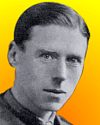
Born 22 Oct 1877; died 20 Mar 1950 at age 72.
English bacteriologist who, working with George Ingram, was the first to publish (1912) a method for isolating and culturing the extremely fastidious Mycobacterium paratuberculosis, the bacterium that causes Johne's disease, or chronic dysentery of cattle. He was the first to publish a report (1915) on what were called bacteriophage (viruses that prey upon bacteria) when Félix d'Hérelle independently made the discovery two years later. Twort's somewhat accidental discovery happened when he noticed that the bacteria infecting his plates became transparent. Thinking the virus to be a primitive life form, thereafter he tried to grow viruses in artificial media, but had difficulty funding the research.«
English bacteriologist who, working with George Ingram, was the first to publish (1912) a method for isolating and culturing the extremely fastidious Mycobacterium paratuberculosis, the bacterium that causes Johne's disease, or chronic dysentery of cattle. He was the first to publish a report (1915) on what were called bacteriophage (viruses that prey upon bacteria) when Félix d'Hérelle independently made the discovery two years later. Twort's somewhat accidental discovery happened when he noticed that the bacteria infecting his plates became transparent. Thinking the virus to be a primitive life form, thereafter he tried to grow viruses in artificial media, but had difficulty funding the research.«
In Focus, Out of Step: A Biography of Frederick William Twort, by Antony Twort. - book suggestion.
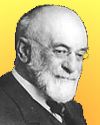
(EB)
Born 22 Oct 1843; died 2 Jul 1931 at age 87.
American agricultural chemist, often called the father of scientific dairying, chiefly because of his development of the Babcock test (1890), a simple method of measuring the butterfat content of milk. It consists in liberating the fat globules by dissolving the casein in a strong acid and then separating the fat by means of a centrifuge. The test discouraged milk adulteration and provided for the first time an adequate standard by which fair payment for milk could be determined, stimulated improvement of dairy production, and aided in factory manufacture of cheese and butter. He worked for 43 years at the University of Wisconsin, where he established a laboratory where he carried out pioneering research in nutrition and in the chemistry of vitamins.
American agricultural chemist, often called the father of scientific dairying, chiefly because of his development of the Babcock test (1890), a simple method of measuring the butterfat content of milk. It consists in liberating the fat globules by dissolving the casein in a strong acid and then separating the fat by means of a centrifuge. The test discouraged milk adulteration and provided for the first time an adequate standard by which fair payment for milk could be determined, stimulated improvement of dairy production, and aided in factory manufacture of cheese and butter. He worked for 43 years at the University of Wisconsin, where he established a laboratory where he carried out pioneering research in nutrition and in the chemistry of vitamins.
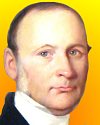
Born 22 Oct 1807; died 22 Apr 1890 at age 82. quotes
Swedish physician who coined the word “alcoholism” and was the first to define it as a chronic, relapsing disease. (Some risks related to alcohol consumption had been mentioned earlier in lectures by Carl von Linné in the 18th century.)
Swedish physician who coined the word “alcoholism” and was the first to define it as a chronic, relapsing disease. (Some risks related to alcohol consumption had been mentioned earlier in lectures by Carl von Linné in the 18th century.)
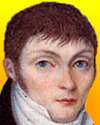
Born 22 Oct 1783; died 18 Sep 1840 at age 56.
Constantine Samuel Rafinesque was a French naturalist, traveller and writer who, in spite of work of variable reliability, still substantially expanded knowledge with extensive travels, collecting, cataloging and naming huge numbers of plants and some animals. Among these are many new species he is credited with being the first to describe. Years ahead of Charles Darwin's theory of evolution, Rafinesque conceived his own ideas. He thought that species had, even within the timeframe of a century, a continuing tendency for varieties to appear that would diverge in their characteristics to the point of forming new species. Accordingly, he was over-enthusiastic at distinguishing what he called new species. He wrote prolifically, and often self-published. His work varied from brilliant insightfulness to carelessness. He had a difficult personality, was in his time often dismissed and died impoverished.«[He was born in Turkey, but his nationality came from his father.] more
Constantine Samuel Rafinesque was a French naturalist, traveller and writer who, in spite of work of variable reliability, still substantially expanded knowledge with extensive travels, collecting, cataloging and naming huge numbers of plants and some animals. Among these are many new species he is credited with being the first to describe. Years ahead of Charles Darwin's theory of evolution, Rafinesque conceived his own ideas. He thought that species had, even within the timeframe of a century, a continuing tendency for varieties to appear that would diverge in their characteristics to the point of forming new species. Accordingly, he was over-enthusiastic at distinguishing what he called new species. He wrote prolifically, and often self-published. His work varied from brilliant insightfulness to carelessness. He had a difficult personality, was in his time often dismissed and died impoverished.«[He was born in Turkey, but his nationality came from his father.] more
Constantine Samuel Rafinesque: A Voice in the American Wilderness, by Leonard Warren. - book suggestion.
Born 22 Oct 1511; died 19 Feb 1553 at age 41. quotes
German mathematician who was a leading mathematical astronomer in his time. He carefully calculated the first set of planetary tables applying Copernican theory, published in 1551. They were named after his financial supporter (Albert, Duke of Prussia) as the Tabulae Prutenicae. Although Reinhold's work furthered the acceptance of Copernican views, he expressed no enthusiasm for the heliocentric assumption. He merely accepted it for having merit as a mathematical device yielding practical results. His tables were superceded in three-quarters of a century by Kepler's improvements.«
German mathematician who was a leading mathematical astronomer in his time. He carefully calculated the first set of planetary tables applying Copernican theory, published in 1551. They were named after his financial supporter (Albert, Duke of Prussia) as the Tabulae Prutenicae. Although Reinhold's work furthered the acceptance of Copernican views, he expressed no enthusiasm for the heliocentric assumption. He merely accepted it for having merit as a mathematical device yielding practical results. His tables were superceded in three-quarters of a century by Kepler's improvements.«

Died 22 Oct 1994 at age 85 (born 21 Apr 1909). quotes
American psychologist who is the best known of the American existential psychologists. Much of his thinking can be understood by reading about existentialism in general, and the overlap between his ideas and the ideas of Ludwig Binswanger is great. Nevertheless, he is a little off of the mainstream in that he was more influenced by American humanism than the Europeans, and more interested in reconciling existential psychology with other approaches, especially that of Sigmund Freud. In 1958, he edited, with Ernest Angel and Henri Ellenberger, the book Existence, which introduced existential psychology to the US.
American psychologist who is the best known of the American existential psychologists. Much of his thinking can be understood by reading about existentialism in general, and the overlap between his ideas and the ideas of Ludwig Binswanger is great. Nevertheless, he is a little off of the mainstream in that he was more influenced by American humanism than the Europeans, and more interested in reconciling existential psychology with other approaches, especially that of Sigmund Freud. In 1958, he edited, with Ernest Angel and Henri Ellenberger, the book Existence, which introduced existential psychology to the US.
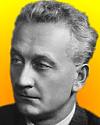
Died 22 Oct 1986 at age 93 (born 16 Sep 1893). quotes
Hungarian-American biochemist who was awarded the 1937 Nobel Prize for Physiology or Medicine “for his discoveries in connection with the biological combustion processes, with special reference to vitamin C and the catalysis of fumaric acid.” He isolated the vitamin C (ascorbic acid), noted its value for preventing scurvy, and extracted quantities of it from Hungarian paprika. He also investigated biological oxidation and recognized the catalytic function of the C4-dicarboxylic acids and discovered flavin. In 1938 he began work on muscle research and shortly discovered the proteins actin and myosin and their complex.«
Hungarian-American biochemist who was awarded the 1937 Nobel Prize for Physiology or Medicine “for his discoveries in connection with the biological combustion processes, with special reference to vitamin C and the catalysis of fumaric acid.” He isolated the vitamin C (ascorbic acid), noted its value for preventing scurvy, and extracted quantities of it from Hungarian paprika. He also investigated biological oxidation and recognized the catalytic function of the C4-dicarboxylic acids and discovered flavin. In 1938 he began work on muscle research and shortly discovered the proteins actin and myosin and their complex.«
Search and Discovery: A Tribute to Albert Szent-Györgyi, by Benjamin J. Kaminer (ed.). - book suggestion.
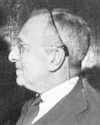
Died 22 Oct 1963 at age 73 (born 15 Aug 1890).
Elvin Morton Jellinek was an American physiologist who was a pioneer in the scientific study of the nature and causes of alcoholism and in descriptions of its symptomatology. He was an early proponent of the disease theory of alcoholism, arguing with great persuasiveness that alcoholics should be treated as sick people. Jellinek gathered and summarized his own research and that of others in the important and authoritative works Alcohol Explored (1942) and The Disease Concept of Alcoholism (1960). In the latter book, Jellinek also recognized that some features of the disease (e.g., inability to abstain and loss of control) were shaped by cultural factors.
Elvin Morton Jellinek was an American physiologist who was a pioneer in the scientific study of the nature and causes of alcoholism and in descriptions of its symptomatology. He was an early proponent of the disease theory of alcoholism, arguing with great persuasiveness that alcoholics should be treated as sick people. Jellinek gathered and summarized his own research and that of others in the important and authoritative works Alcohol Explored (1942) and The Disease Concept of Alcoholism (1960). In the latter book, Jellinek also recognized that some features of the disease (e.g., inability to abstain and loss of control) were shaped by cultural factors.
Died 22 Oct 1915 at age 84 (born 13 Sep 1831).
(Baronet) Scottish physicist and gunnery expert, known as a founder of the science of ballistics. He invented the chronoscope, a device for measuring very small time intervals, and in about 1862, he used it to measure the velocity of shot in gun barrels. His investigations in ballistics led to the redesign of guns, new methods of loading, and development of new types of gunpowder.
(Baronet) Scottish physicist and gunnery expert, known as a founder of the science of ballistics. He invented the chronoscope, a device for measuring very small time intervals, and in about 1862, he used it to measure the velocity of shot in gun barrels. His investigations in ballistics led to the redesign of guns, new methods of loading, and development of new types of gunpowder.
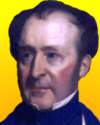
Died 22 Oct 1871 at age 79 (born 19 Feb 1792). quotes
Scottish geologist who first differentiated the Silurian strata in the geologic sequence of Early Paleozoic strata (408-540 million years old). He believed in fossils as primary criteria. In 1831, Murchison began researching the previously geologically unknown graywacke rocks of the Lower Paleozoic, found underlying the Old Red Sandstone in parts of Wales, which culminated in his major work The Silurian System (1839). He named the Silurian after an ancient British tribe that inhabited South Wales. He established the Devonian working with Adam Sedgwick (1839). Another worldwide geological system, the Permian (1841), the uppermost of the Paleozoic, he named after the Perm province in Russia where he made a geological survey in 1840-45.«
Scottish geologist who first differentiated the Silurian strata in the geologic sequence of Early Paleozoic strata (408-540 million years old). He believed in fossils as primary criteria. In 1831, Murchison began researching the previously geologically unknown graywacke rocks of the Lower Paleozoic, found underlying the Old Red Sandstone in parts of Wales, which culminated in his major work The Silurian System (1839). He named the Silurian after an ancient British tribe that inhabited South Wales. He established the Devonian working with Adam Sedgwick (1839). Another worldwide geological system, the Permian (1841), the uppermost of the Paleozoic, he named after the Perm province in Russia where he made a geological survey in 1840-45.«
Scientist of the Empire: Sir Roderick Murchison, by Robert A. Stafford. - book suggestion.
Died 22 Oct 1815 at age 71 (born 30 Jan 1744).
American blacksmith and inventor who began manufacturing farm tools, domestic utensils and cut nails using water power at Pawtucket, Rhode Island, from about 1783. He expanded with an anchor-forging shop the next year, and later added a metal rolling and slitting mill. About 1786, he began making iron screws for clothier's and oil presses. In 1791 he built a reverbatory air furnace. By 1800, Wilkinson and his sons had established themselves as the centre of iron products manufacturing in New England, supplying the machinery parts needed by new industries. Wilkinson joined his son-in-law Samuel Slater in the textile industry. Oziel's son, David furnished the iron forgings and castings for the first carding and spinning machines at Slater's Mill.«
American blacksmith and inventor who began manufacturing farm tools, domestic utensils and cut nails using water power at Pawtucket, Rhode Island, from about 1783. He expanded with an anchor-forging shop the next year, and later added a metal rolling and slitting mill. About 1786, he began making iron screws for clothier's and oil presses. In 1791 he built a reverbatory air furnace. By 1800, Wilkinson and his sons had established themselves as the centre of iron products manufacturing in New England, supplying the machinery parts needed by new industries. Wilkinson joined his son-in-law Samuel Slater in the textile industry. Oziel's son, David furnished the iron forgings and castings for the first carding and spinning machines at Slater's Mill.«
Died 22 Oct 1792 at age 67 (born 12 Sep 1725).
Guillaume-Joseph-Hyacinthe-Jean-Baptiste Le Gentil de la Galaziere was a French astronomer who attempted to observe the transit of Venus across the sun by travelling to India in 1761. He failed to arrive in time due to an outbreak of war. He stayed in India to see the next transit which came eight years later. This time, he was denied a view because of cloudy weather, and so returned to France. There, he found his heirs had assumed he was dead and taken his property.
Guillaume-Joseph-Hyacinthe-Jean-Baptiste Le Gentil de la Galaziere was a French astronomer who attempted to observe the transit of Venus across the sun by travelling to India in 1761. He failed to arrive in time due to an outbreak of war. He stayed in India to see the next transit which came eight years later. This time, he was denied a view because of cloudy weather, and so returned to France. There, he found his heirs had assumed he was dead and taken his property.

In 1981, aspartame artificial sweetener was approved for tabletop use by the U.S. Food and Drug Administration. Its permitted uses included in candy, tablets, breakfast cereals, instant coffee and tea, gelatines, puddings, fillings, dairy-product toppings and as a flavour enhancer for chewing gum, among others. It was first approved on 26 Jul 1974, but objections caused a stay on 5 Dec 1975, and years of scrutiny followed. Years earlier, in Dec 1965, while working on an ulcer drug, James M. Schlatter had made the discovery that a mixture of two amino acids, aspartic acid and phenylalamine, had a sweet taste. By weight it was about 200 times sweeter than sugar, with very few calories. G.D. Seale marketed it as NutraSweet, a low-calorie artificial sweetener without the bitter aftertaste of saccharin.«
Aspartame: Physiology and Biochemistry, by Lewis D. Stegink and Lloyd J. Filer. - book suggestion.
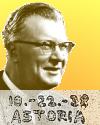
In 1938, xerography was demonstrated by Chester F. Carlson. With his assistant, Otto Kornei, Carlson used a sulphur coating on a zinc plate, vigorously rubbed with a handkerchief to apply an electrostatic charge. A glass slide was prepared using India ink to write "10-22-38 ASTORIA," then laid on the sulphur surface in a darkened room. After illuminating them with a bright incandescent lamp for a few seconds, the slide was removed. When lycopodium powder was sprinkled on the sulphur surface and blown off, there remained a near-perfect image of the writing. Permanent copies were made by transferring the powder images to wax paper and heating the sheets to melt the wax. Xerox is a term coming from "xerography" which means dry writing and is a trademark.
Copies in Seconds: ...Chester Carlson and the Birth of Xerox, by David Owen. - book suggestion.
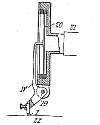
In 1912, Thomas A. Edison was issued patents for a “Conveyor” related to a cement kiln, and for a “Phonograph-Stylus” formed of crystallized boron, which because of its hardness (in fact, much harder than sapphire) could operate on sound records formed from hard materials without wearing away. Small crystals of boron could be formed in an electric furnace, and were easier to polish than diamond, while not being as fragile. (U.S. Nos. 1,041,756 and 1,041,983).
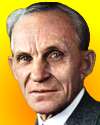
In 1906, Henry Ford became President of Ford Motor Company. Since the company incorporation paperwork was signed on 16 Jun 1903, the President had been the investor John S. Gray. Since the company was first formed, he had been the company Vice President and Chief Engineer. When Gray died on 6 Jul 1906, the shareholders elected Ford to take the position of company president. It would be another two years before the Model T Ford car would be made available to the public on 1 Oct 1908, but earlier Ford models had been in production at the purpose-built Piquette Avenue Plant since Dec 1904. Shortly after becoming the company President, he was arranging to build an even larger, efficient factory at Highland Park.«
My Life and Work, by Henry Ford. - book suggestion.
In 1879, Edison's long series of experiments testing materials for suitability as an electric light filament reached a turning point. Charles Batchelor, working at Edison’s Menlo Park laboratory, produced illumination for 14½ hours from a lamp using a carbonized cotton thread. It failed when extra power was added. However, this was such a substantial improvement, attention turned to improving the carbonized filament. Patents were filed, and within two months the progress with the Edison light bulb was made public. An article was published on 21 Dec by the New York Herald. By then, the Menlo Park laboratory was continuously illuminated by Edison's incandescent light bulbs.«
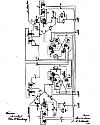
In 1878, Thomas A. Edison was issued a patent for “Quadruplex-Telegraph Repeaters” (U.S. No. 209,241). This invention is an improved method for one quadruplex circuit to repeat into another quadruplex circuit. The patent describes the electromagnets, local circuits, switches and connections. The circuits work into and operate each other, so that the message are repeated automatically into one circuit by the receiving instrument of the other circuit, instead of the finger key being operated by hand.
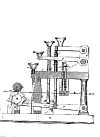
In 1872, Thomas A. Edison was issued patents for an improvement in “Paper for Chemical Telegraphs” and for an improved “Apparatus for Perforating Paper for Telegraph Use” (U.S. Nos.132455, -6). The chemical paper Edison had previously designed used a solution of potassium iodide and starch adhered to paper and used while moist. He noted that when dry, the starch tended to crack and peel from paper. He patented an improvement using a very thin paste of flour and water that with the solution of potassium iodide would pentrate the paper fabric. In the second patent, Edison described a compact machine to punch perforated tape used to transmit telegraphic messages. Keys could punch either a single hole for a dot or three holes for a dash.
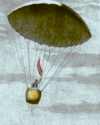
In 1797, the first successful parachute jump was made by André-Jacques Garnerin, released from a balloon 2,230-ft above the Parc Monceau, Paris. He rode in a gondola fixed to the lines of a 23-ft diameter parachute, which was supported by a wooden pole and had its 32 white canvas gores folded like a closed umbrella. Lacking any vent in the top of the parachute, Garnerin descended with violent oscillations, and suffered the first case of airsickness. For his next jump, he added a hole in the top of the parachute. He made his fifth jump on 21 Sep 1802 over London, from a height of 3,000-ft. This was the first parachute descent made in England. He landed near St. Pancras Church. Having eliminated the centre vent for this jump, he again suffered a fit of vomitting.
more
more




